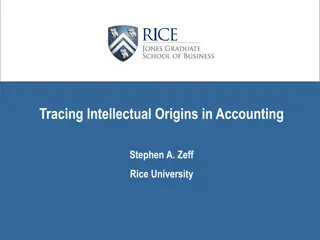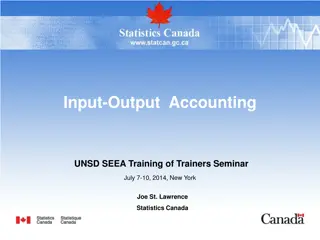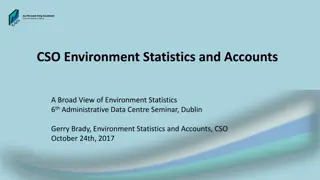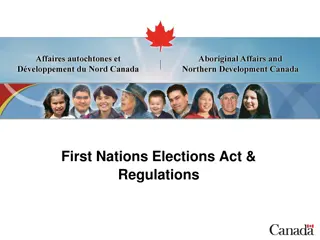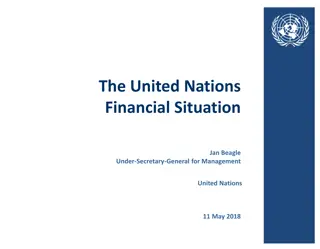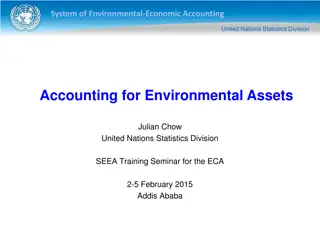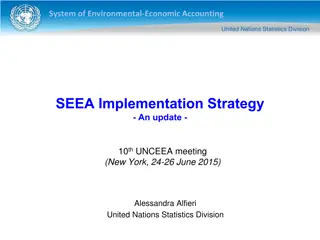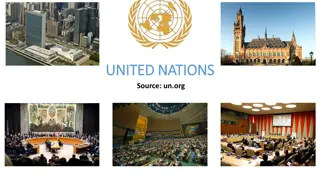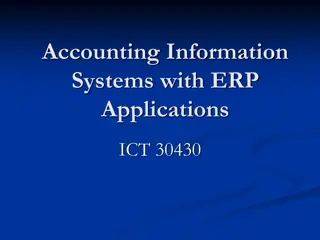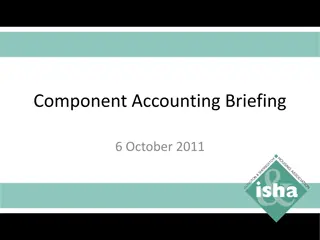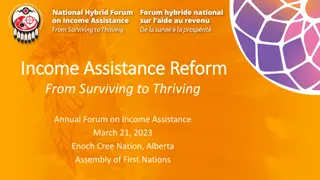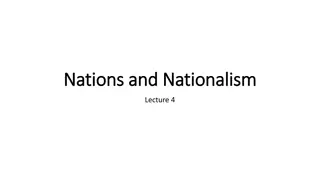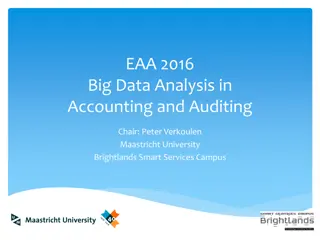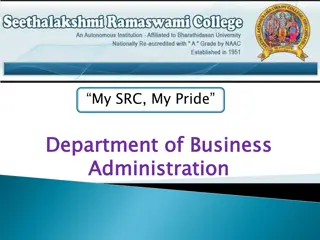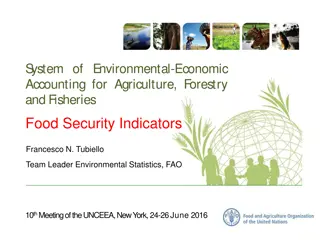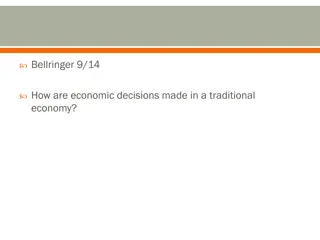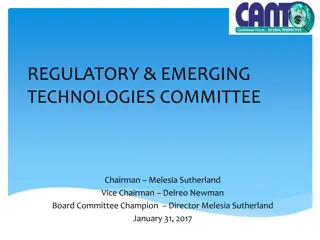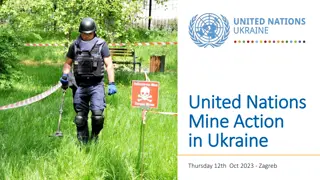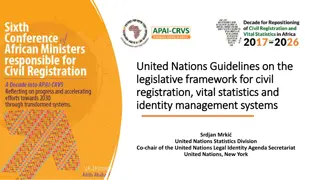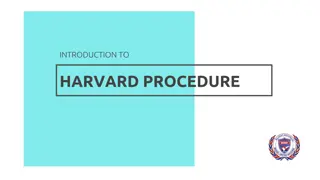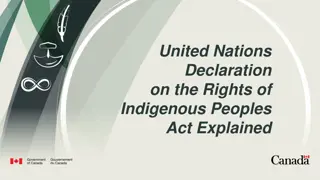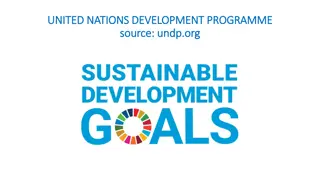United Nations Committee of Experts Meeting on Environmental-Economic Accounting
The content discusses the activities and developments of the UN Committee of Experts on Environmental-Economic Accounting, focusing on the formation of the Inter-agency and Expert Group on SDG Indicators. It outlines the mandate, roadmap, and timeline for developing a global indicator framework for monitoring post-2015 development goals. Key actors involved in the indicators process and the way forward are highlighted.
- United Nations
- Environmental-Economic Accounting
- SDG Indicators
- Global Development
- Statistical Analysis
Download Presentation

Please find below an Image/Link to download the presentation.
The content on the website is provided AS IS for your information and personal use only. It may not be sold, licensed, or shared on other websites without obtaining consent from the author. Download presentation by click this link. If you encounter any issues during the download, it is possible that the publisher has removed the file from their server.
E N D
Presentation Transcript
Tenth Meeting of the UN Committee of Experts on Environmental-Economic Accounting New York, 24-26 June 2015 Inter-agency and Expert Group on SDG Indicators Matthias Reister Senior Statistician, Statistical Service Branch Statistics Division/DESA June 2015 1
Mandate and roadmap The Commission, at its forty-sixth session (3-6 March 2015), endorsed the roadmap for the development and implementation of a global indicator framework and, in particular, the formation of the Inter-agency and Expert Group on SDG Indicators (IAEG-SDGs), to be tasked with fully developing a proposal for the indicator framework for the monitoring of the goals and targets of the post-2015 development agenda at the global level, under the leadership of the national statistical offices, in an open and transparent manner. The Commission also endorsed the suggested timetable that foresees the presentation by the IAEG- SDGs of an indicator framework at the forty-seventh session of the Commission in March 2016 for its review and approval; 2
First preliminary inds list to post-2015 intergovernmental negotiations 23 27 March 2015 First meeting IAEG- SDGs 1-2 June 2015 UN Stat Commission Friday Seminar on indicator framework for the post-2015 27 Feb 2015 Possible further consideration by the political IG process July 2016 EGM on SDG inds 25-26 Feb 2015 UN Stat Commission Adoption of inds framework March 2016 UN Stat Commission Plenary discussion on SDGs inds 3 6 March 2015 GA adoption of post 2015 dev t agenda September 2015 Indicators process: Timeline 3
Indicators process: Process and key actors Intergovernmental negotiations on the post 2015 dev t agenda Work on indicators for SDGs Coordinated by the UN Stat Commission (UNSC) UNSD as secretariat UNSC-FOC Group on Broader Measures of Progress UNSD as secretariat IAEG SDG Indicators Established by UNSC 28 Member States plus international agencies and other stakeholders Statistical experts from international agencies (CCSA, former IAEG on MDG Indicators, etc.) UNSD as secretariat National Statistical Offices 4
Way forward First Meeting of the Inter-agency and Expert Group on the Sustainable Development Goal Indicators (IAEG-SDGs) New York, 1-2 June 2015 draft conclusions are available Expected way forward Establishment of two discussion streams, first compilation of possible indicators for a global indicator framework Second round of consultation, updated compilation of possible indicators Next meeting of the IAEG-SDGs, tentatively 26-28 Oct. 2015 Finalization of proposal for a global indicator framework by the end of November Setting-up of an electronic collaboration platform 5
Why a framework of indicators? Global indicators for global monitoring Additional indicators for thematic monitoring National and sub-national indicators 6
A framework of indicators? Global indicators Include: Elements of disaggregation Special groups Inequality issues Thematic/sectorial indicators Include: Additional indicators on each of the elements covered by the global indicators Indicators that are only relevant at the national level Concepts, definitions and measurement issues Elements of disaggregation Sub-national indicators Include: Global indicators National indicators Additional data sources (most innovative?) National indicators Include: Some of the thematic indicators? Some (all?) of the global indicators 7
Multidimensional indicator framework architecture National Regional Thematic Sub-national Thematic Global
Development of a global indicator framework Need to respond to all targets Limited set of global indicators The global indicators should be an integral part of regional, national, sub-national and thematic indicator frameworks Global indicator framework is important because it: Informs the global political discussion Provides a structure for the development agenda Informs communication/advocacy campaigns 9
Development of a global indicator framework And from the point of view of statistical development: Consistency and collaboration in data compilation Harmonization and rationalization of development indicators Policy-oriented statistics Framework for coordination for data production Framework for statistical capacity-building 10
Selecting the indicators Indicators should be: Methodologically sound (internationally agreed definition) Measurable Accessible and easy to interpret Relevant Timely Regularly produced over time And for global indicators: Internationally comparable 11
Should we include all indicators irrespective of their level of development? Tier 1: Satisfy all criteria Tier 2: Satisfy most criteria but data coverage is insufficient Tier 3: Methodology still being developed 12
Where are the gaps? Results of an initial assessment of proposed indicators (technical report of the UNSC on the process of the development of an indicator framework, March 2015) (continued) In terms of feasibility, 51 proposed indicators were rated Easily feasible (methodology exists and data is available) by at least 60 percent of respondents, For 161 overall rating of Feasible with strong effort , For 92 overall rating Difficult, even with strong effort Gaps exist especially in new areas see technical report for details (http://unstats.un.org/unsD/broaderprogress/work.html) 13
Policy Level Developments The zero draft of the outcome document for the UN summit was just released and these are 3 main points from it: Contains the full list of 17 goals and 169 targets Poverty eradication and leaving no one behind are highlighted throughout the document Proposes an SDG Progress Report, that would be prepared by the IAEG-SDGs 14
THANK YOU 15







